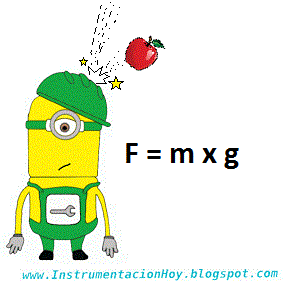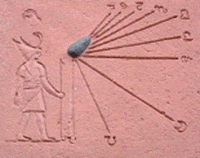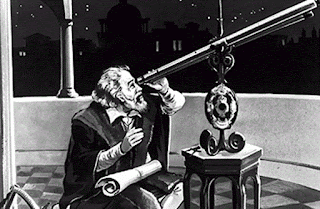This post tries to give a vision of "Instrumentation and control" evolution, from the origins to our time. (Controllers, actuators and instruments)
The control systems. The man has always tried to control the environment that surrounded him.
The control functions are intrinsic to living beings.
To get up or fill a simple glass of water, our brain makes complex control functions that are programmed.
It might be said that the brain has been the first industrial controller and we have always used it to control the world. The development of the functions that are implemented in the current industrial industry, only seek to copy the behavior of the human being.
The actuators. The hominids began to use the first tools, from the beginning of the Paleolithic about 2.5 million years ago. At that time they were simple stones, bones or sticks.
The Instrumentation. The measurement came from the discovery of the numbers, due to we need to express numerically all that surrounds us.
Archaeologists have found marks on rocks and bones, more than 35,000 years old, that seem to represent counts of objects and periods of time.
Prehistory ends after the first great civilizations birth. Mesopotamia, Egypt and the Maya Empire.
The boom in trade at this time forced the development of measurement sciences. One of the first inventions that was most used was the balance, It was developed in Mesopotamia 5,000 b.c.
In these first years there were other great discoveries, that would facilitate the physical work, like the lever or the wheel.
The primitive forms of numbering were not practical to represent large values, so they had to evolve into more complex numerical systems. One of the first advanced numbering systems was the one developed by the Egyptians, 3,000 b.c.
During this time, the Egyptians made more advances, such as the first gate valves, which allowed them to control irrigation channels, or the first solar clocks to measure time.
The compass is discovered in China around the ninth century, this instrument would be of vital importance in maritime transport.
A cultural movement called the Renaissance arises in 1400. It is a glorious stage in the science history. Great artists, scientists and inventors were born in this time. Leonardo Da Vinci was a good example, he was born in 1452.
Galileo Galilei invented the thermoscope in 1592 in addition to his amazing contributions to astronomy. This instrument would allow the first temparature measurements.
Isaac Newton, one of the most important physicists in history was born in 1642.

Torricelli invented the barometer in 1643, it allows to measure the atmospheric pressure.
Fahrenheit introduced the mercury thermometer with the Fahrenheit scale in 1724.
Celsius established the Celsius units in 1742. He based on the freezing temperature of water.
John Campbell invented the sextant in 1757. Isaac Newton had developed a similar invention years ago.
The "Industrial Revolution" arises in England and it extends throughout Europe in 1760.
A rural world began the greatest social, economic and technological revolution in its history.
The manpower was reduced and the production increased.
The industrial automatic began to form a essential part of our world at this historic moment.
The development of trade and science of the time, required one more step. The units had to be homogenized in 1790 (During the French Revolution).
The standardization of the first units of measurement was carried out from France (the meter and the kilogram). These units had to be, fixed, invariable and universal.
The sewing machine with punched cards by Joseph Jacquard in 1801.
Moritz Von Jacobi made the first electric motor in 1834.
The Kelvin degree (the absolute zero) was defined in 1848.
Nikola Tesla was born in 1856. His ideas and inventions are the foundations of the electrical transport by cable and by wireless.
Henry Ford founded the Ford Motor Company in 1903.
In 1914 an international event would change again the course of history, the "First World War".
But we don't usually learn from our his mistakes, so the "Second World War" arised a few years later in 1939.
Between both wars the first steps of the electronics appeared, for example Julius Edgar Lilienfeld invented the transistor in 1925.
Konrad Zuse manufactured the first programmable computer in 1941.
The second war ended after the launching of the first atomic bomb with the nuclear age birth in 1945.
It was then when the humanity really became aware of its self-destructive potential, therefore we had to focus our creativity towards others targets (we are still working on it).
The countries defeated by the war (Japan and Germany), took few years to recover their influence position. The Times described the issue as the German economic miracle in 1950. Japan took a few more years to recover (1960-1980)
The power electronic applications began with the development of the first high-frequency transistor, by John Tiley and Richard Williams in the United States in 1953.
The nuclear technology was never bad, the problem was what we could do with the nuclear technology. During the next few years, nuclear power plants were built in the most industrialized countries. The first one was in Russia in 1954.
The two great winners of the war (USSR and the United States) emerged as biggest technological superpowers.
But, they required a motivation to continue progressing at the same velocity so they decided to conquer the space.
The United States and Russia began to invest their technological potential in the space like a tennis game, with the target of score more points.
U.R.S.S put into orbit the first satellite in 1957.
Yuri Gagarin was the first person to travel through space in 1961. The United States sent its first astronaut a month later.
Atomic bombs, nuclear power plants, space travel, etc. These macro-projects required unprecedented economic, technological and human resources. They required a new way of executing a project.
Our current way of working has a great influence of the concepts developed to carry out these type of projects and, among other things the Instrumentation and Control department was born then.
However, during these years, we have not only learned from our successes, but we have also had to learn from our mistakes.
The scientific community announced the discovery of the ozone hole in 1985.
Our current way of working has a great influence of the concepts developed to carry out these type of projects and, among other things the Instrumentation and Control department was born then.
However, during these years, we have not only learned from our successes, but we have also had to learn from our mistakes.
The Chernobyl catastrophe happened in 1986, which supposed the international awareness of safety in nuclear plants. But, it wasn't the first and nor, unfortunately, will it be the last.
In 1988, it was publicly reported about the global warming.
Many times the engineers don't change anything until something happens, under the motto "if it works, do not touch it", no matter if we see that something wrong is coming.
Are we really aware of the dangers of gas emissions?
Are we really aware of the current rate at which we are consuming resources?
Is there a sustainable development?
are we only looking the economic benefits in the projects, without being considered the future of the planet?
It is likely that we will continue to be learning from our mistakes, in the next years.
In 1988, it was publicly reported about the global warming.
Many times the engineers don't change anything until something happens, under the motto "if it works, do not touch it", no matter if we see that something wrong is coming.
Are we really aware of the dangers of gas emissions?
Are we really aware of the current rate at which we are consuming resources?
Is there a sustainable development?
are we only looking the economic benefits in the projects, without being considered the future of the planet?
It is likely that we will continue to be learning from our mistakes, in the next years.



















No comments:
Post a Comment